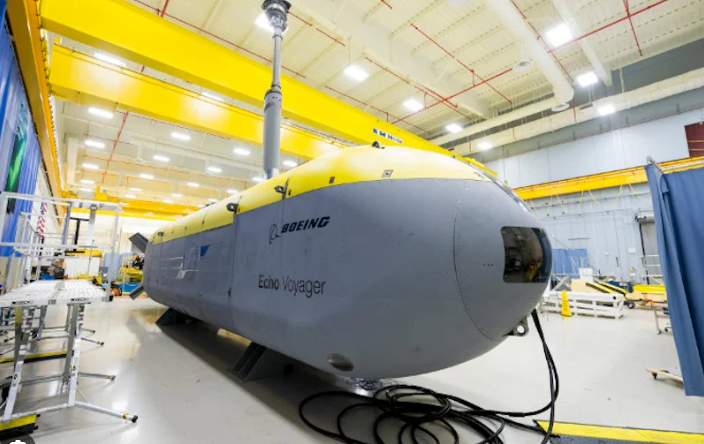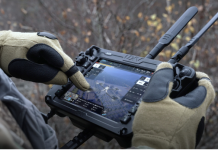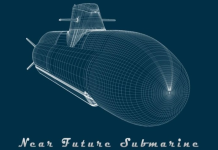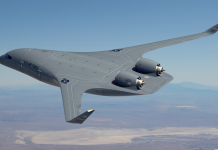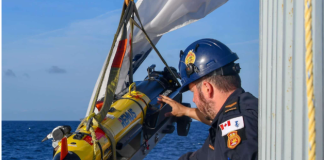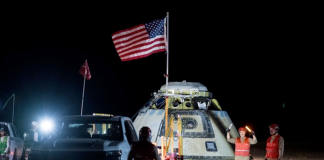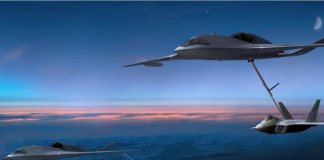U.S. Navy unmanned submarine experts are asking the Boeing Co. to continue technical support of the Orca Extra Large Unmanned Undersea Vehicle (XLUUV) to undertake long-endurance missions to deploy sensors or other UUVs.
Officials of the U.S. Naval Sea Systems Command in Washington announced an $8.5 million order to the Boeing Defense, Space & Security segment in Huntington Beach, Calif., for engineering support services in support of the XLUUV program.
The order involves continued engineering and technical support of system design, testing, and delivery of the large-displacement uncrewed undersea vehicle.
Extra-large UUVs are typically autonomous mini-submarines measuring about seven feet in diameter—sometimes larger. They are designed for launch from shore, from large military ships with well decks, or from large civil vessels with moon pools.
The modular-construction Boeing Orca XLUUV will be an open-architecture reconfigurable unmanned underwater vehicle (UUV) with the core vehicle providing guidance and control, navigation, autonomy, situational awareness, core communications, power distribution, energy and power, propulsion and maneuvering, and mission sensors, Navy officials say.
Boeing is the original equipment manufacturer for the XLUUV, is the only known source able to support the Orca XLUUV, Navy experts say. The Orca XLUUV will have well-defined interfaces for cost-effective future upgrades to capitalize on advances in technology and respond to threat changes. The Orca XLUUV will have a modular payload bay, with defined interfaces to support current and future UUV payloads.
XLUUVs, which are among the largest unmanned submersibles ever conceived, will be for long-endurance surveillance missions or undersea cargo vessels to deliver other sensor payloads and other UUVs.
These large unmanned undersea vehicles could eventually function as motherships to deploy and recover smaller surveillance UUVs on far-flung reconnaissance, surveillance, or special warfare missions in the open ocean, along coastlines, or inside harbors.
The Navy and the U.S. Defense Advanced Research Projects Agency (DARPA) in Arlington, Va., have involved Lockheed Martin Corp. and Boeing on a variety of large UUV projects such as the Large-Displacement Unmanned Underwater Vehicle (LDUUV) project.
The Navy’s XLUUV project is moving forward enabling technologies developed originally in other projects, such as the DARPA Hydra program. The goal is to develop an unmanned submersible large enough to transport and deploy UAVs and UUVs stealthily in enemy territory to respond quickly to situations around the world.
Boeing also has developed the Echo Voyager, a 51-foot large UUV that can reach depths of 11,000 feet and can operate independently for months underwater. Boeing unveiled the Echo Voyager in early 2016 and began sea trials of the unmanned undersea craft in the summer 2017.
For more information contact Boeing Defense, Space & Security online at www.boeing.com/defense/xluuv#gallery, or Naval Sea Systems Command at www.navsea.navy.mil.

